| Title | Pages |
|---|---|
| Preparation of Molecularly Imprinted Optical Sensors for the Real Time Detection of Phenol In recent years, it has become important to identify phenols and their compounds that pose an important threat to living things and public health. In this study, phenol imprinted surface plasmon resonance (SPR) sensors were designed based on molecular imprinted method for detection of phenol. Polymeric film with cavities of phenol molecules was prepared and formed on the SPR chip surface by UV polymerization. The limit of detection range from 0.15 to 10 nM was 0.022 nM. Furthermore, we performed the selectivity experiments, where catechol was chosen as competitor agent. Overall, phenol imprinted SPR sensor prepared by the molecular imprinting approach has been found to be highly sensitive and selective for phenol. Phenol imprinted SPR sensors are considered to be used as a new method for existing phenol determination methods with their high selectivity, repetitive use and fast responses. 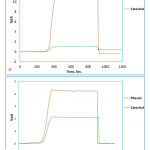
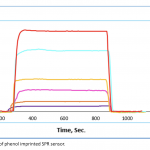
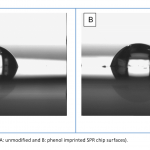
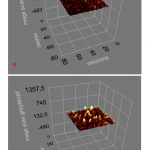
|
333 - 344 |
| Effect of Various Inhibitors on Enzymatic Browning, Antioxidant Activity and Total Phenol Content of Fresh-Cut Rocket Salad (Eruca Sativa Mill.) In this study, polyphenol oxidase (PPO) was extracted and partially purified by ion-exchange chromatography on a column packed with diethyaminoethyl cellulose (DEAE) from fresh rocket salad. Its optimum temperature and pH were found to be 30°C and 6.0, respectively. Rocket PPO was shown to the greatest substrate specificity with catechol among the substrates used. Ascorbic acid, cysteine, oxalic acid and citric acid were tested as potential inhibitors of rocket PPO. Cysteine was found as the most effective inhibitor. While ascorbic acid increased the total antioxidant activity of rocket significantly, Rocket phenolics were protected from oxidation by the treatments of these inhibitors. 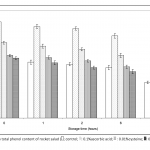
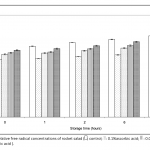
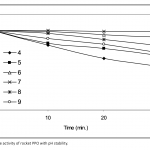
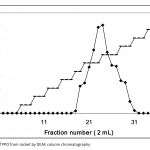
|
345 - 354 |
| Development of Iridium Based Fluorimetric Method for Determination of Cysteine Cysteine (Cys) and homocysteine (Hcy) amino acids that are containing thiol groups play many important roles in biological systems. The plasma level of Hcy is known to be an indicator of some disorders such as cardiovascular and Alzheimer’s disease. Cys deficiency in plasma is associated with liver damage, muscle and fat loss, skin lesions, slowed growth, etc. In this study, iridium-based complexes were chosen for developing a fluorescent-based method for the determination of Cys levels due to their high photoluminescence efficiency. For this aim, the iridium (III) complex was synthesized then, this complex interacted with Cys solutions. It was found that, as the concentration of Cys interacting with the iridium complex, the fluorescence intensity increased. Based on these data, it was thought that the synthesized iridium complex could be used in the fluorimetric determination of Cys level in serum samples. 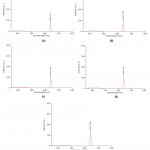
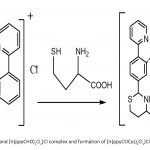
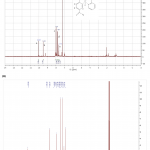
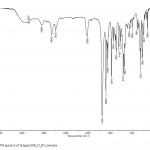
|
355 - 365 |
| Structural Analysis of Novel Amino Acid Substitutions in SARS-CoV-2 Spike Protein Receptor-Binding Domain There are several novel amino acid substitutions in SARS-CoV-2 spike protein, which could account for the increased infectivity of this newly emerged virus. Therefore, in this paper we aimed to evaluate the potential effects of these amino acid substitutions on protein structure and function. For this purpose, we made use of several state-of-the-art computational tools and performed in silico analyses on protein similarity, 2D and 3D structure, ligand binding and biological function. We found that some of the novel amino acid changes caused significant structural alterations both at the secondary and tertiary structure level, possibly affecting the interaction between the spike protein receptor-binding domain (RBD) and ACE2, as well as other ligands. In conclusion, data we provided here is a significant contribution to our current knowledge of the SARS-CoV-2 virus and will aid in having a better understanding of its molecular differences, mechanism of infection and the cellular processes it affects in the host in order to develop better therapies and vaccines. 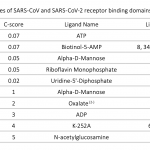
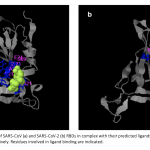
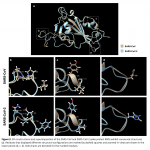
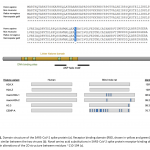
|
367 - 374 |
| Gold and Silver Bimetallic Core-shell Nanoparticles with a Polydopamine Interface as an Ideal Catalytic Nanosystem Core-shell nanoparticle systems with their flexible and unique properties have been employed in various applications especially in catalytic conversion. However, the simple, low-cost, and novel strategies to prepare these nanosystems are still limited and the efficient core-shell nanostructures are highly demanded. In this study, I propose the production of the core-shell bimetallic nanosystem of gold and silver through a thin layer of polydopamine (PDOP). The PDOP layer as interphase provided efficient performance as a reducing and stabilizing agent. The fabrication of the bimetallic core-shell system was confirmed via electron microscope images and UV-vis absorption spectra. The catalytic activity tests, the reduction of 4-nitrophenol (4-NP) to 4-aminophenol (4-AP), of the nanostructures indicated that the emergence of the core-shell system dramatically enhanced the progress of the reaction. It was also noticed that silver reduction time has a significant effect on the catalytic performances of the proposed nanosystem. Total conversion of 4-NP to 4-AP was observed within only 20 min for the case of 60 min of silver reduction time. 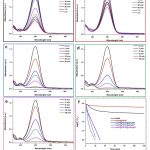
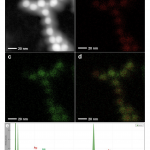
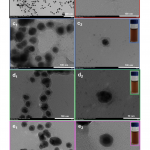
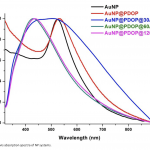
|
375 - 383 |
| Antioxidant Capacity and Essential Oil Composition of Hypericum thymopsis Boiss. (Hypericaceae) from Turkey Antioxidant capacity and essential oil composition of Hypericum thymopsis Boiss. (Hypericaceae), an endemic species, distributed in Turkey was determined. The samples of three different populations were used for the analysis. Antioxidant capacity was determined by DPPH method from the leaves and flowers. Essential oil analysis was performed from areal parts of plant by gas chromatography (GC) and GC/mass spectrometry (MS). The major components of the essential oil were determined as α-pinene (31.86%), spathulenol (11.16%) and limonene (4.3%) in the specimen TA3004, α-pinene (28.07%), spathulenol (12.37%) and limonene (6.07%) in the specimen TA3014 and α-pinene (26.03%), limonene (14.83%) and spathulenol (9.74%) in the specimen TA3017. According to the 50% inhibition (IC50) values (μg/mL) the highest antioxidant values were measured in the methanolic extract of flowers. 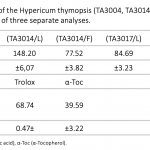
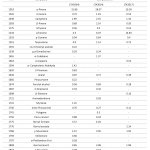
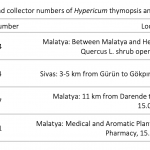
|
385 - 390 |
| Faunistic Study on the Family Meloidae (Coleoptera) of Ankara Province (Turkey) The main aim of this study is to determining Meloidae fauna of Ankara. 3301 specimens were collected. 43 species belonging to 2 subfamilies and 15 genera were identified. The genus Mylabris Fabricius, 1775 is the most species-rich genus with 10 species. Cerocoma (s.str.) bernhaueri Pardo Alcaide, 1977, Alosimus luteus (Waltl, 1838), Teratolytta monticola Bologna, 2006, Hycleus polymorphus (Pallas, 1771), H. sexmaculatus (A.G. Olivier, 1811), Mylabris (Micrabris) unicolor Faldermann, 1837, Meloe (Eurymeloe) mediterraneus (G. Muller, 1925) and Stenoria (s.str.) apicalis (Latreille, 1804) species were recorded from Central Anatolian Region of Turkey for the first time. Detailed locality records of M. (Micrabris) unicolor and S. (s.str.) apicalis in Turkey were given with this study for the first time. The most western distributions of Alosimus luteus and Teratolytta monticola were given with this study. 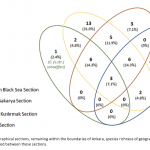
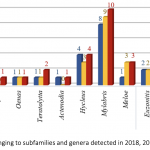
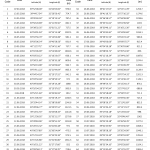
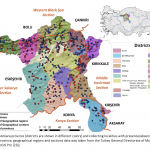
|
391 - 403 |
| Effects of Smoke and Heat-Shock on Germination in Eight Perennial Reseda Species (Resedaceae) Reseda is an understudied genus regarding germination ecology. We studied the germination response of eight perennial Reseda species to fire related cues by performing a germination experiment including two aqueous smoke treatments (at 1:5 and 1:20 concentrations), one heat shock (100°C for 5 min.) treatment, and two corresponding controls. Smoke slightly decreased germination percentage in R. aucheri ssp. rotundifolia and R. minoica, and the reduction in R. luteola was statistically significant (P < 0.01). In contrary, smoke promoted germination in R. coodei, R. globulosa, and R. orientalis slightly, and markedly in R. anatolica (from 3 to 11%; P = 0.055). Heat shock treatment did not affect the germination in three of four species tested, but significantly increased germination percentage in R. luteola in comparison to the control (P = 0.046). Consequently, there was no consistent germination response to smoke or heat shock in Reseda species studied. This study is the most comprehensive study tested fire-related germination of several Reseda species and provides the first germination results on seven Reseda species. Further studies that include more species and treatments would show a more completed figure for fire-related germination patterns in the genus Reseda.
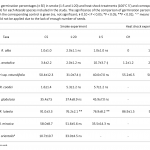
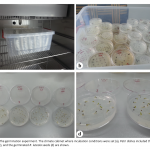
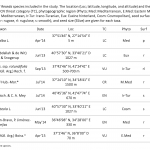
|
405 - 411 |
| Development and Validation of a Effective and Reliable HPLC Method for the Quantification of Levodopa and Carbidopa in Pharmaceutical Formulations Aconvenient and simple high performance liquid chromatography method for simultaneous separation, determination and identification of levodopa and carbidopa in pharmaceutical formulation has been developed. The analysis was carried out using Ace C18 (4.6 x 250 mm, 5 μm) column, and the separation was performed using a mobile phase consisting of 50 mM KH2PO4 (pH 2.3) pumped at a flow rate of 1.2 mL min-1 with UV detection at 280 nm. The method has been successfully validated on the basis of the International Conference on Harmonization (ICH) acceptance criteria. The method is selective, since no interferences corresponding to these analytes were found at retention times. Retention times for both drugs were 2.939 min and 5.018 for levodopa and carbidopa, respectively. The method was validated and shown to be linear in the concentration range of 25-125 μg mL-1 and 6.25-31.25 μg mL-1 for levodopa and carbidopa, respectively. The method exhibited good linearity (R2 > 0.999) over the assayed concentration range and showed good intra-day and inter-day precision. The limit of detection (LOD) and limit of quantification (LOQ) were determined based on standard deviation of the intercept and the slope of the calibration curve. LOD and LOQ values were 0.70 μg mL-1 and 2.13 μg mL-1 for levodopa and 1.31 μg mL-1 and 3.96 μg mL-1 for carbidopa, respectively. The method’s accuracy was tested by adding known volume of standard solution (75 percent, 100 percent, and 125 percent concentration of the sample) to the 100 percent concentration pre-analyzed sample solution. The percentage mean recovery by standard addition experiments of levodopa and carbidopa is 99.75% and 99.55%, respectively. This method has also been successfully used for the determination of levodopa and carbidopa in pharmaceutical formulations. 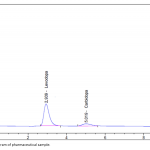
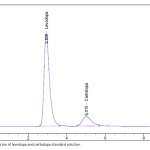
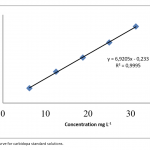
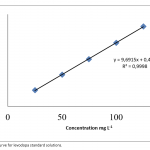
|
413 - 422 |
| Preparation of Bacterial Cellulose/Vinyl Imidazole-Based Membranes for Selective Purification of Hemoglobin The development of new biomaterials is needed to use in many areas such as protein purification, removal and drug release system. In this study, we fabricated hemoglobin (Hb) surface imprinting onto the bacterial cellulose nanofibers. The metal ions coordination was obtained with vinyl imidazole and Ni2+ ions. The selective purification of Hb was obtained using Hb-imprinted bacterial cellulose. The Scanning Electron Microscopy, Surface area, Transformed Infrared Spectroscopy, swelling tests and contact angle measurements were used for the characterization of Hb-imprinted and non-imprinted bacterial cellulose membranes. In addition, the adsorption studies were experimented with using the Hb aqueous solution in the batch systems at 2 h. In this study, the prepared bacterial cellulose was reported as unique biomaterials for selective and sensitive purification of Hb with high adsorption capacity. The reusability of bacterial celluloses was demonstrated during the experiment. 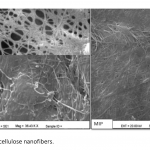
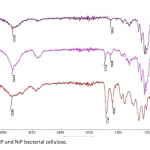
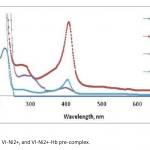
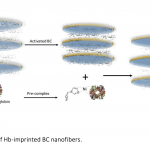
|
423 - 431 |
| First Record of a Feral Population of Green Swordtail (Xiphophorus hellerii) with an Additional Record of Guppy (Poecilia reticulata) in Turkish Freshwaters Livebearer poeciliids, with few exceptions, are among the most popular and highly traded ornamental fish species. Therefore, they are frequently introduced to natural waters outside their native range mostly by aquarium hobbyists. Here we report feral populations of two exotic poeciliid species, the green swordtail (Xiphophorus hellerii) and the guppy (Poecilia reticulata), established in a hot spring in the Eastern Turkey (38°34′ 32′′N, 37°29′21′′E). This is the first documented record of swordtail in Turkey and possibly the first records of the two species in the wider Euphrates Basin. More research is needed to address the potential impacts of these two poeciliids on the native biota, and also their further spread chance and management options. 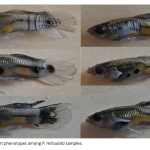
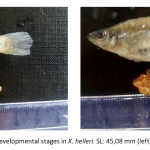
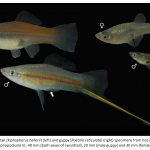
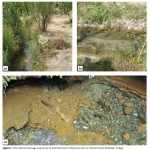
|
433 - 441 |